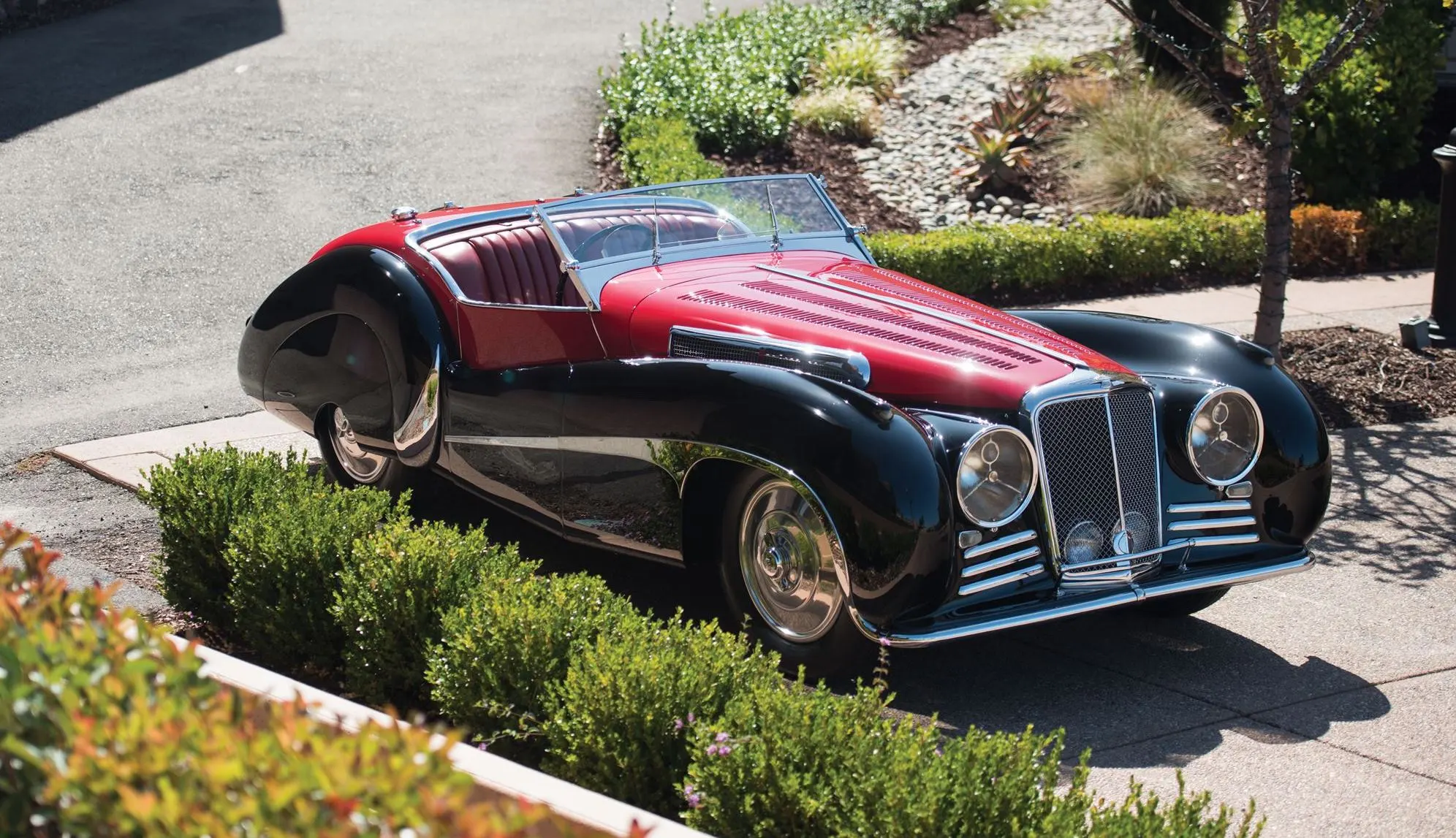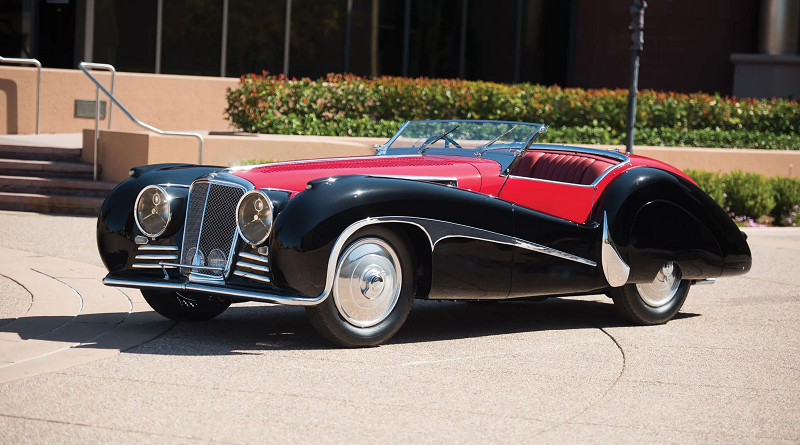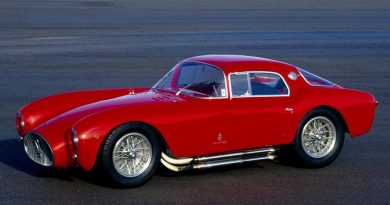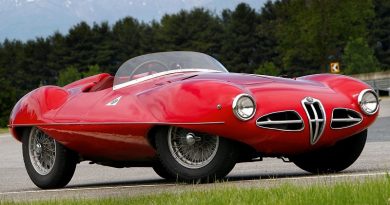1939 Jaguar SS100 2½-Litre Roadster
The SS Jaguar 100 is a British 2-seat sports car built between 1936 and 1939 by SS Cars Ltd of Coventry, England.
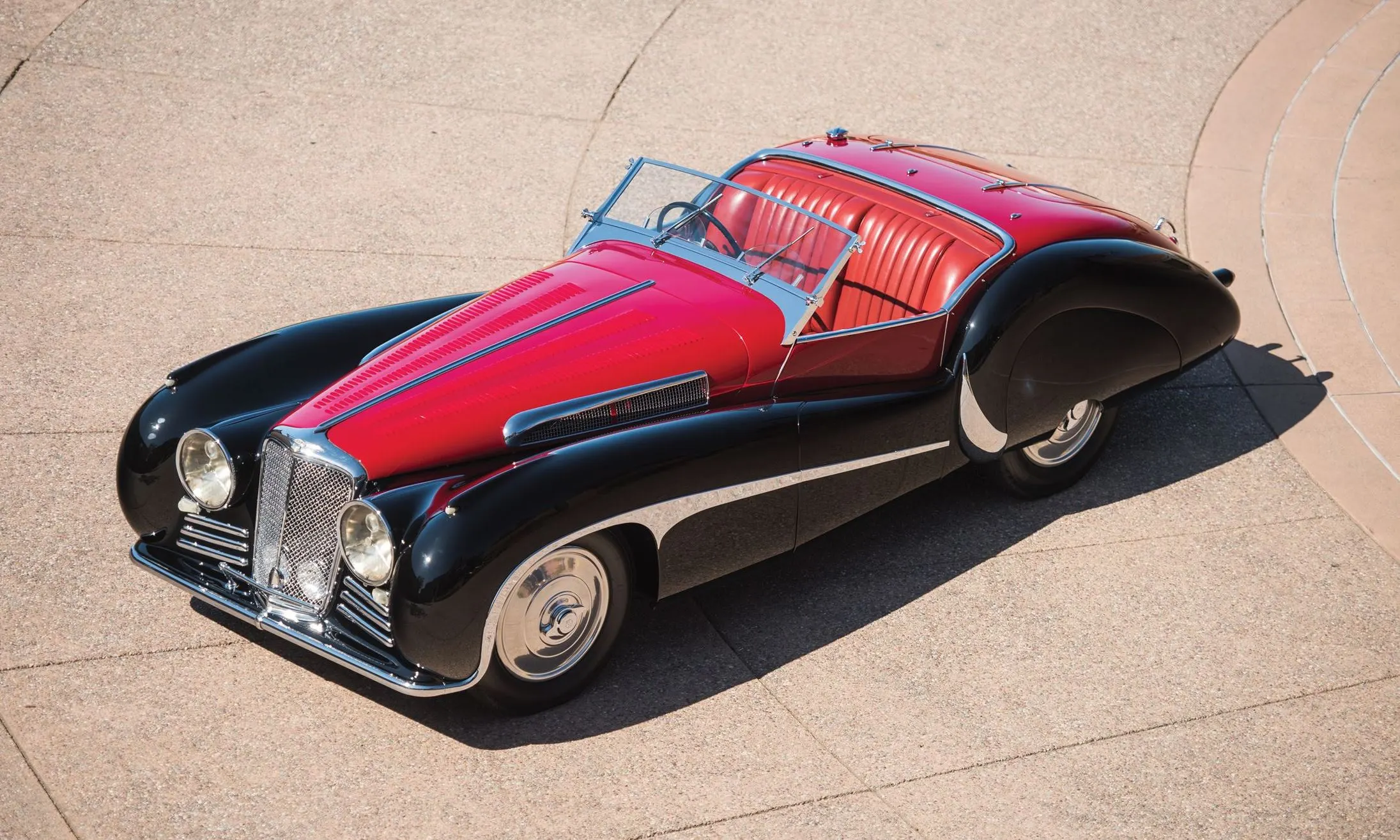
The manufacturer’s name ‘SS Cars’ used from 1934 maintained a link to the previous owner, Swallow Sidecar, founded in 1922 by Walmsley and Lyons to build motorcycle sidecars. In March 1945 the S. S. Cars shareholders agreed to change the name to Jaguar Cars Limited.

In common with many products of the thirties the adoption of an animal name was deemed appropriate and the model name “Jaguar” was given to a new SS saloon car in 1935, and then to all new SS models.
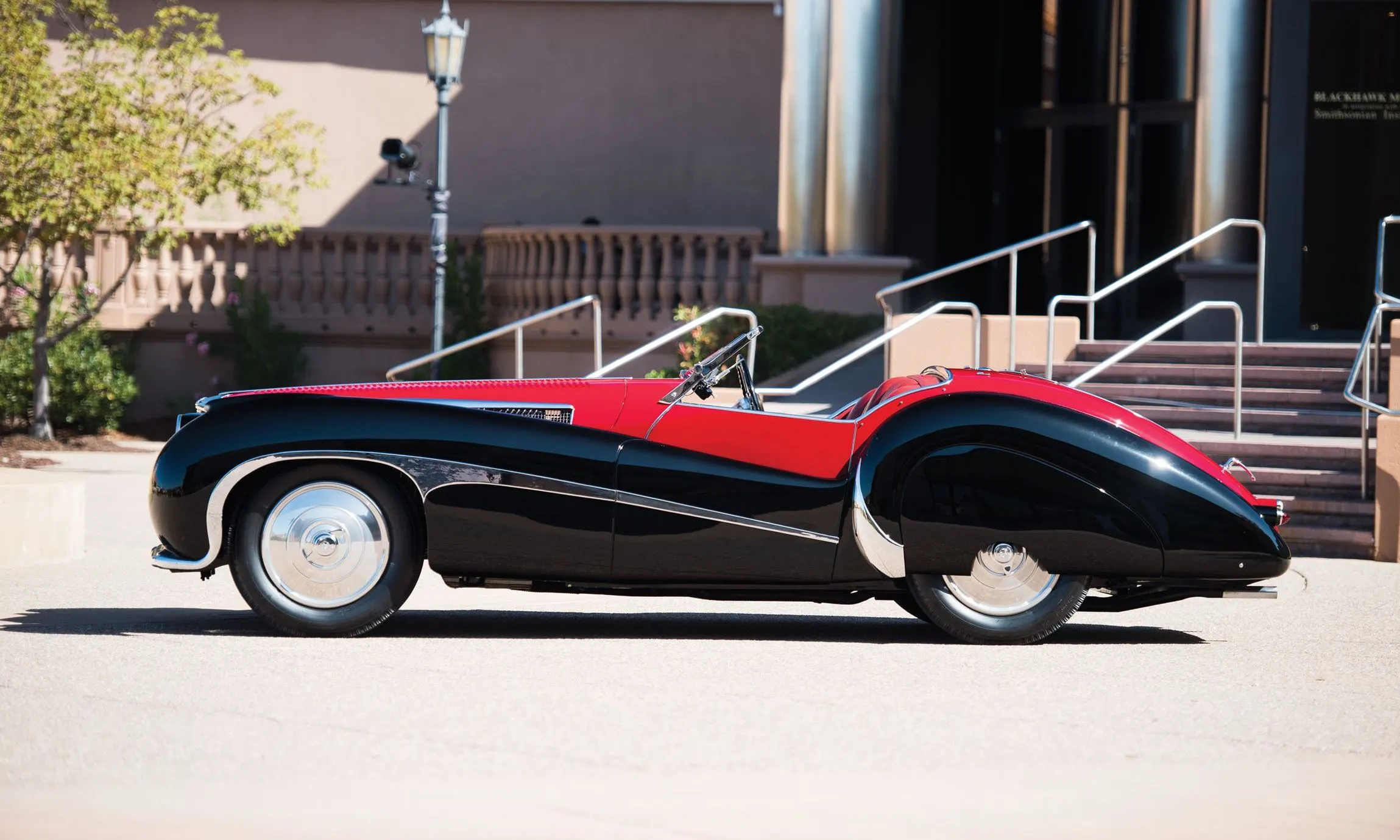
The ‘100’ was for the theoretical 100 mph maximum speed of the vehicle.
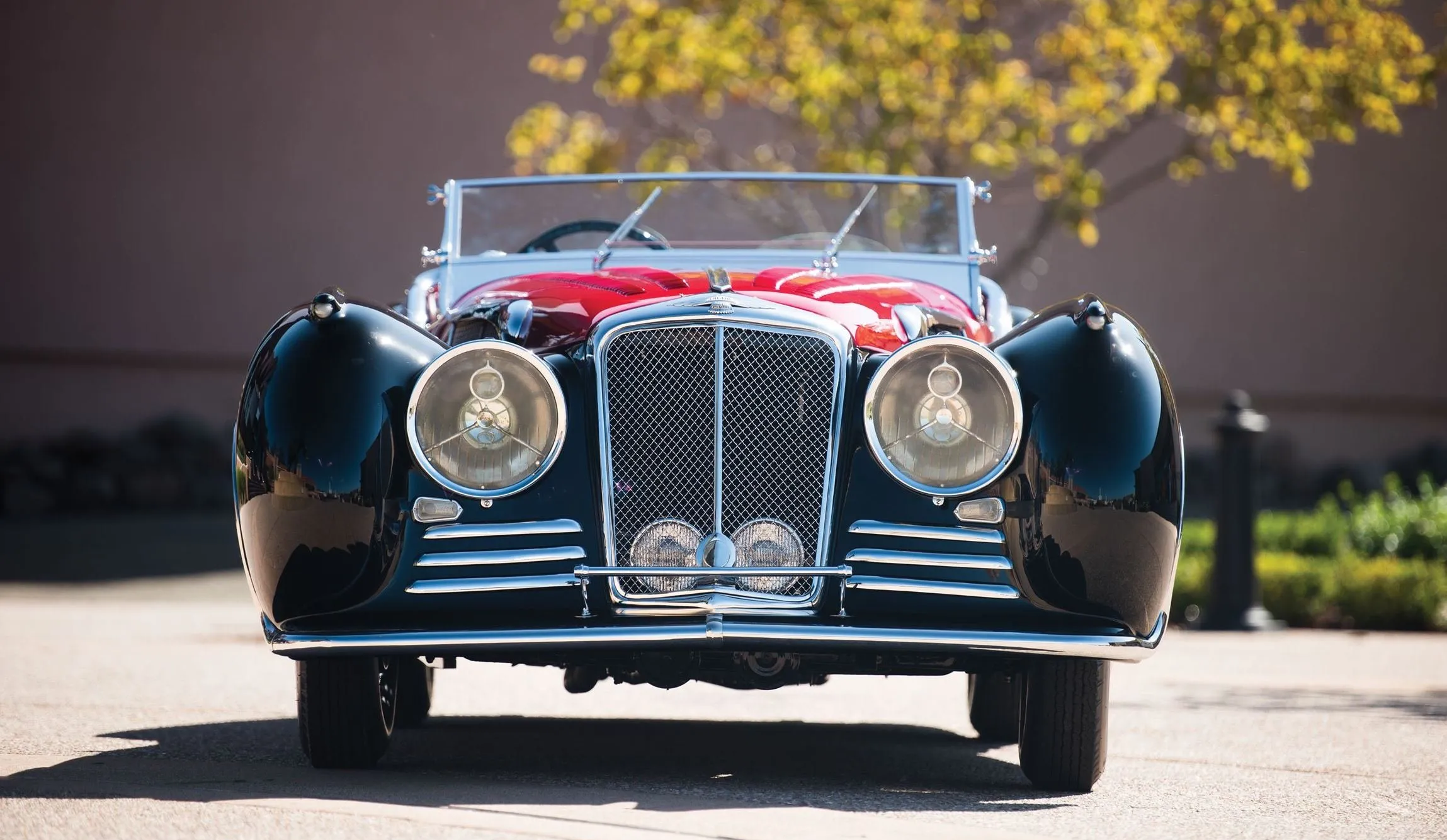
According to history that has long accompanied this car, SS 100 Jaguar, the last 2½-Litre chassis built in 1939 per the Jaguar Daimler Heritage Trust, was purchased by Van den Plas as a basis for a custom body prior to World War II. The war prevented the project from continuing, and the chassis managed to survive the conflict. Thus, when it came time for Van den Plas to return to coachbuilding, they looked to the only chassis they had readily on hand as the basis for their first show car, an all-important creation that would hopefully attract new business during the lean immediate post-war period.

The first true performance car from SS, the SS 100 “Jaguar,” breathed new life into the gorgeous design of its predecessor, the SS 90, as it had a revised radiator, new headlamps, and a sporty Le Mans-type fuel tank. Under the hood was markedly improved performance, as it featured a new 102-horsepower, overhead-valve, six-cylinder engine with a new cylinder head and dual SU carburetors. The model was named for the top speed that it could reach, 100 mph, and it quickly became popular with enthusiasts. That enthusiasm has never waned.

Inside, the leather is unwrinkled, the carpets are unmarked, and it is fitted with a rallying tripmeter on the transmission tunnel. The instruments are present and correct and the only criticism is the spangly engine-turned dash.

The SS100 was one of the fastest and best-handling sports cars of its day, as its competition record both before and after the war bears witness to. Representing a rare opportunity an example of the model that can be said to have started the Jaguar legend, SS100 is eligible for a wide variety of the most prestigious historic motor sports events.
